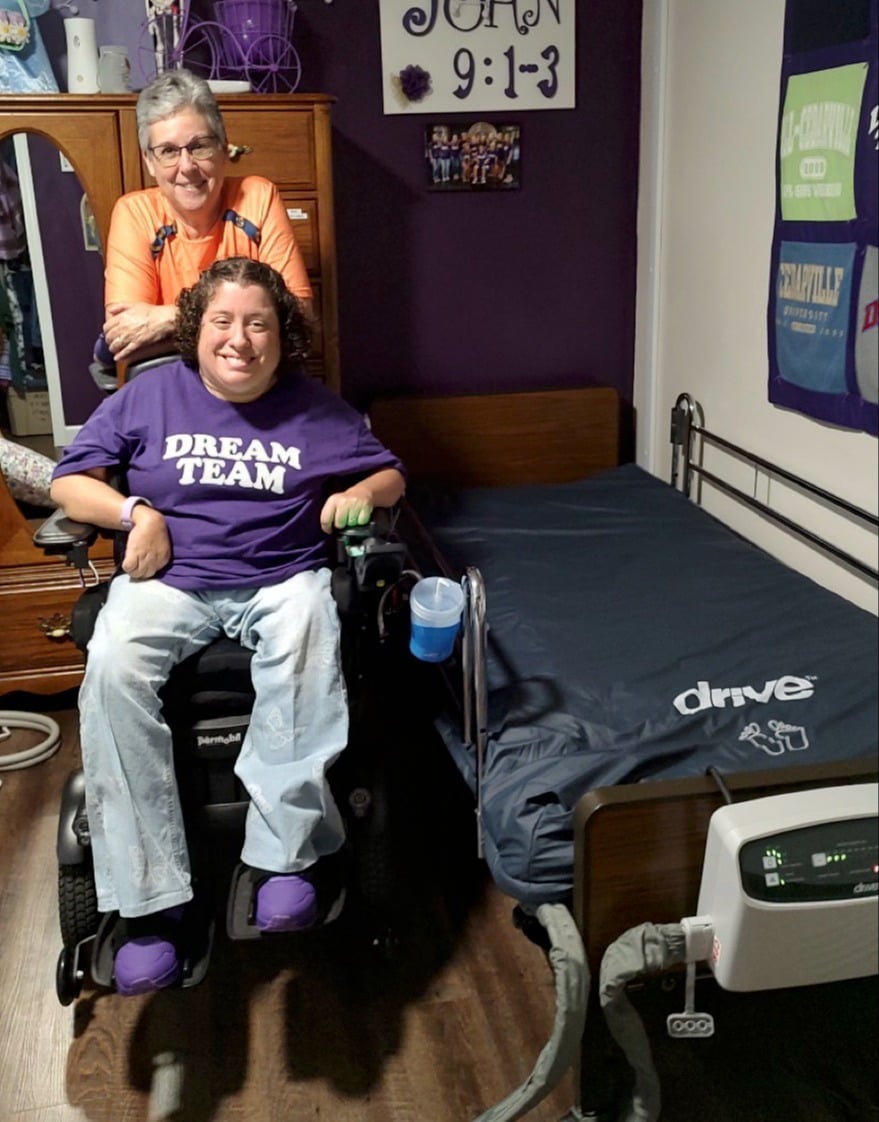Sleep had become a struggle for Emily Shanahan, a 35-year-old Ohioan with cerebral palsy and chronic pain. A 2001 surgery for scoliosis had left her with a Luque rod from her back to her pelvis. Meanwhile, not being self-mobile meant she was prone to developing painful pressure sores. Seeking relief, she began sleeping on a makeshift system consisting of a basic camping mattress and foam topper while seeking out more medically appropriate ways of treating skin breakdown.
When a Medicaid request for a low air loss mattress system, a type of mattress that helps redistribute a user's weight over a larger surface area to help prevent skin breakdown, was turned down due to her pressure injuries "only" being Level 2, her mother Barb reached out to our team for help, and our team arranged for Emily to receive the Med-Aire 8" Alternating Pressure and Low Air Loss Mattress system.
As the name implies, the Med-Aire 8" Alternating Pressure and Low Air Loss Mattress system is not only a low air loss mattress system, meaning it provides a constantly circulating airflow that helps keep skin cool and dry, but also features another important technology for helping to reduce pressure injuries, alternating pressure. Through 20 individual air cells that individually inflate and deflate, the system redistributes pressure evenly to provide a clinical benefit similar to natural shifting. In addition to these features, the system also has a pillow feature for head stability and comfort a fluid-resistant, low-shear, and vapor-permeable cover to help protect the skin from friction and moisture.
Our team heard back from Emily just after she received the mattress system and were thrilled to learn that her pressure injury had already shown significant improvement. Emily shared her experience on her blog, which we've excerpted here. Read below for Emily's experience with the Med-Aire system in her own words.
Emily's Review: The Med-Aire 8" Alternating Pressure and Low Air Loss Mattress System
As a differently enabled woman who has had twelve orthopedic surgeries, I live with a significant level of chronic pain. The rotational feature of the bed greatly relieves much of my orthopedic pain, which highly improves my quality of sleep.
The primary reason why I wanted a low-loss rotational mattress was to decrease the incidence of skin breakdown. At the writing of this post one week into having this bed, my one pressure area is almost closed and no other pressure spots are developing currently. Yay!
Drawbacks to the bed? There are no drawbacks! The only two aspects of the low air loss mattress that took some getting used to for me were the sound of the bed at night, and figuring out the settings on the bed.
 If you think about it, most beds don’t make sounds at night, so if one’s bed is suddenly making sound every 25 minutes when it rotates you, that’s a little surprising. The sound never woke me up, it just took me a while to get to sleep the first night.
If you think about it, most beds don’t make sounds at night, so if one’s bed is suddenly making sound every 25 minutes when it rotates you, that’s a little surprising. The sound never woke me up, it just took me a while to get to sleep the first night.
As far as the settings on the bed go, I am not a naturally techy person. Initially, I couldn’t find the off switch to the bed. One email to the company later, however, helped me to quickly discover where the off-switch was located.
One final, perennially purple thank you to Drive DeVilbiss Healthcare for the low air loss mattress! Thank you so much!
Learn more about Emily on her website www.meetemilyshanahan.com.


.png)



.png)

